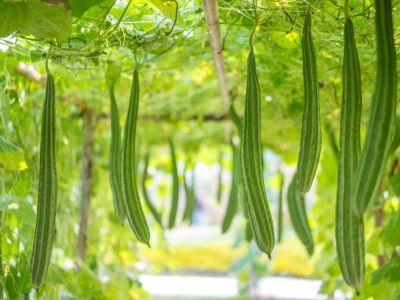What is a Luffa Gourd?
Luffa (Luffa aegyptiaca and Luffa acutangula), also known as loofah, vegetable sponge, or dishcloth gourds are grown mainly for their useful, fibrous tissue skeleton. Young fruits can be eaten as squash, used in stews, or even used in place of cucumbers. The luffa gourd plant is an annual tropical or subtropical climbing vine. When the fruit section of the plant matures, it can be used as an organic bath or kitchen sponge. Some people have even been known to use it to treat jaundice.
Luffa Gourd Planting
Growing luffa plants is an enjoyable project but not one for the impatient. Luffa is cold sensitive and takes a long time to mature into a dried sponge, so luffa gourd planting shouldn’t be attempted if you don’t have the patience to wait. Sow gourd seeds 8 to 12 inches (20-31 cm.) apart along a fence as soon as the ground is warm enough to work and all danger of frost has passed in spring. To facilitate germination, scrape the seed coat with a file or allow seeds to soak for at least 24 hours. Seeds are very slow to sprout, so gardeners should not lose faith. Seeds can also be started indoors several weeks before the last frost. Plant one to three plants in a hill and space hills 6 feet (2 m.) apart. Luffa plants like full sun and organic soil. Mulch should be used, away from the stem, to retain soil moisture and protect the plant.
Luffa Plant Care
Caring for luffa is very similar to caring for cucumbers or melons. Keep plants moist, but not saturated, and provide sturdy support for best results as part of your luffa plant care. Once the plants begin to grow, remove all the first flowers, any male flowers, and the first four lateral branches. This will result in stronger fruit. Remove luffa fruit from the vine before the first frost. Follow instructions for cleaning and preparing the fruit, depending on how it will be used.
